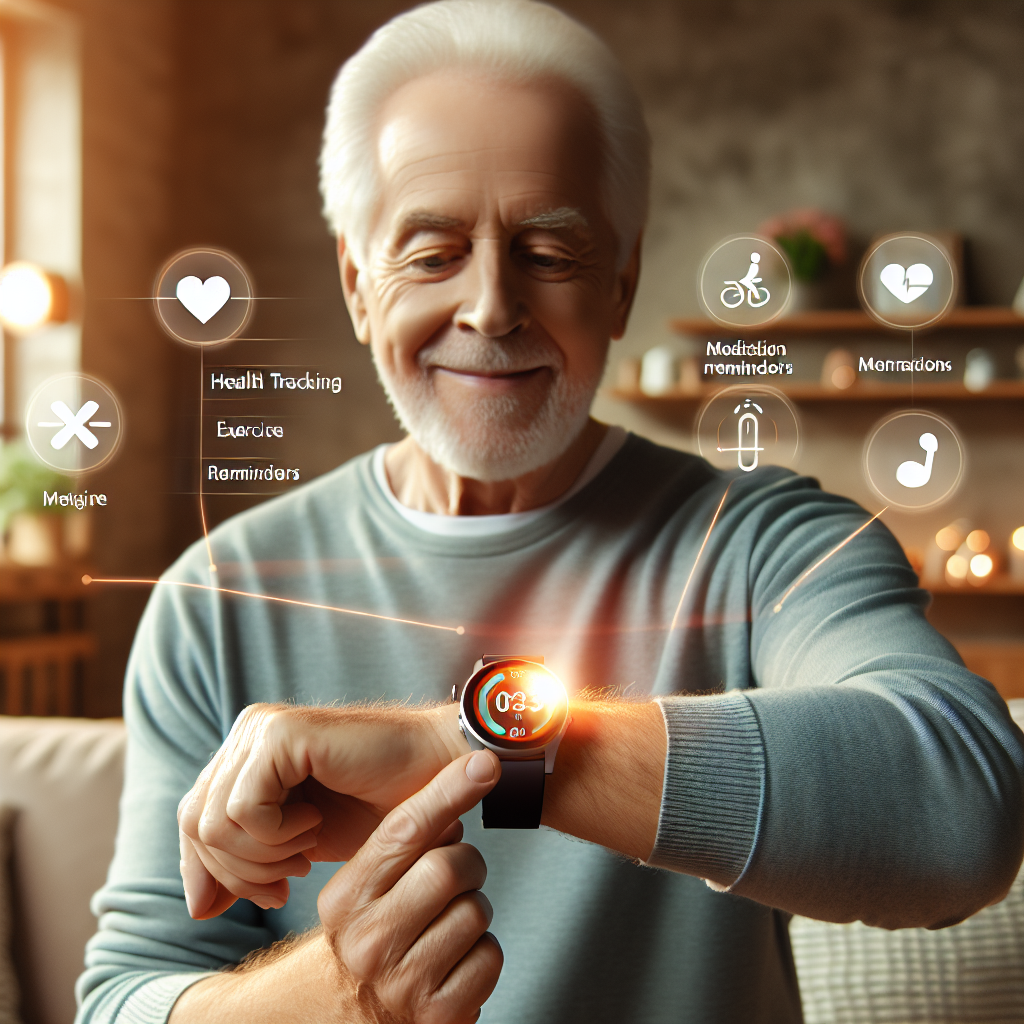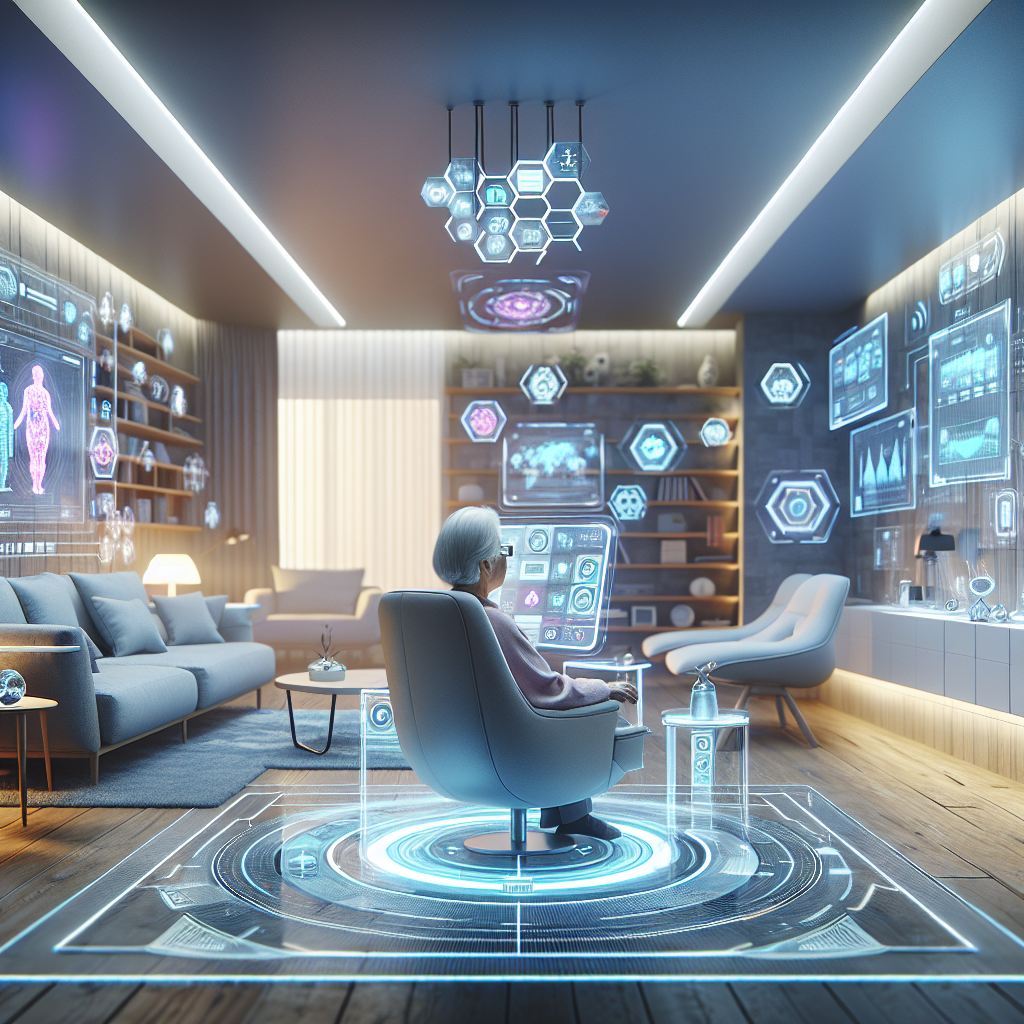Gone are the days when aging meant a slow surrender of independence. Today’s seniors are embracing a tech revolution that’s transforming how we think about aging in place. Smart home technology isn’t just for tech-savvy millennials anymore—it’s becoming an essential tool for older adults who want to maintain their autonomy while aging gracefully in the comfort of their own homes.
As more of us plan for retirement, the concept of a home that adapts to our changing needs becomes increasingly attractive. Smart homes offer seniors the perfect blend of independence and support, creating environments that respond to their unique requirements while providing peace of mind for family members and caregivers.
1. Smart Technology: The New Companion for Independent Living
Smart home technology is quickly becoming the invisible helper that many seniors didn’t know they needed. With voice-activated assistants like Amazon’s Alexa or Google Home, controlling everything from thermostats to television becomes as simple as speaking a command. For those with mobility challenges or arthritis, this hands-free approach to home management represents a significant leap toward maintaining independence.
“I never thought I’d be telling my house what to do at 75,” laughs Martha, a retiree in Colorado. “But now I can’t imagine living without my smart speaker. It turns off lights I forgot about, plays my favorite music, and even reminds me to take my medication.”
The beauty of these systems is their adaptability. As needs change throughout the retirement life journey, smart home technology can evolve too—adding features that support positive aging and independence at every stage.
2. Automating Daily Tasks: More Control, Less Effort
One of the most compelling aspects of smart home technology for seniors is how it simplifies routine tasks that might otherwise become challenging with age. Smart appliances, automated lighting systems, and programmable thermostats can be set to follow schedules or respond to voice commands, eliminating the need to manipulate small buttons or remember complex sequences.
Imagine waking up to gentle lighting that gradually brightens as your smart coffee maker brews your morning cup. Or picture blinds that automatically adjust throughout the day to maintain optimal lighting and temperature. These aren’t futuristic fantasies—they’re available solutions helping seniors maintain control over their environment with minimal physical effort.
Smart refrigerators can track groceries and create shopping lists, while robot vacuums keep floors clean without physical exertion. These technologies don’t just provide convenience; they preserve dignity by allowing seniors to maintain a clean, well-organized home without depending on others for help with daily chores.
For many aging in place enthusiasts, this automated support means the difference between struggling to maintain a household and enjoying retirement life to its fullest.
3. Safety First: Peace of Mind for Seniors and Families
Perhaps the most significant benefit of smart home technology for seniors is enhanced safety. Falls and accidents at home represent major concerns for older adults living independently, but smart home features are changing that equation dramatically.
Motion-activated lighting eliminates the danger of navigating dark hallways at night. Smart smoke and carbon monoxide detectors can send alerts directly to smartphones—not just the homeowner’s but also to designated family members or caregivers. For seniors with memory concerns, stove sensors can detect when burners have been left on too long and either send alerts or shut them off automatically.
“When Mom decided she wanted to stay in her home after Dad passed, we were worried,” shares Jennifer, whose mother lives alone at 82. “The smart security system we installed gives us both peace of mind. I can check in through the doorbell camera, and the motion sensors alert me if there’s no activity during her usual waking hours.”
Emergency response systems have evolved far beyond the “I’ve fallen and can’t get up” pendants of yesteryear. Today’s systems can detect falls automatically using sophisticated sensors, monitor vital signs, and even track sleep patterns to identify potential health concerns before they become serious problems.
For those planning for retirement, incorporating these safety features into a home can significantly extend the period of safe, independent living—a cornerstone of positive aging.
4. The Comfort of Home: Why Aging in Place Matters
There’s a profound psychological benefit to remaining in a familiar environment as we age. Our homes hold memories, comfort, and a sense of belonging that institutional settings simply cannot replicate. Smart home technology makes aging in place a viable option for many seniors who might otherwise need to consider assisted living facilities.
According to an AARP survey, nearly 90% of adults over 65 want to stay in their current homes as they age. Smart home technology is helping make this preference a reality for more seniors than ever before.
“The comfort of sleeping in my own bed, surrounded by pictures of my grandchildren and the garden I’ve tended for decades—that’s invaluable,” explains Robert, 79, who recently upgraded his home with smart features. “This technology isn’t replacing human connection; it’s giving me the support I need to stay where I feel most like myself.”
By eliminating or reducing many of the barriers that typically force seniors to leave their homes, smart technology is preserving not just independence but also quality of life and emotional well-being—essential components of a fulfilling retirement life.
5. Enhanced Living Quality Through Accessibility
Smart home technology doesn’t just help seniors remain at home—it helps them thrive there. Voice-controlled lighting, temperature, entertainment systems, and even window coverings remove physical barriers that might otherwise limit independence.
For seniors with mobility challenges, smart door locks eliminate the struggle with keys, while voice-controlled entertainment systems make enjoying favorite shows or music effortless. Smart outlets can turn off appliances remotely, and automated medicine dispensers provide timely reminders and proper dosing.
These technologies improve sleep quality too. Smart beds can adjust positions to alleviate pressure points or help with conditions like sleep apnea. Lighting systems can be programmed to support natural circadian rhythms, gradually dimming in the evening and brightening slowly in the morning.
“My smart lighting system has completely changed how I sleep,” reports Judith, 72. “It mimics natural sunlight patterns, which has helped regulate my body clock. I’m sleeping better than I have in years, which makes everything in life better.”
Better sleep leads to better days—a simple equation that smart home technology is helping many seniors solve as part of their positive aging journey.
6. Active Living: Technology that Keeps Seniors Moving
Perhaps surprisingly, smart home technology can actually promote more active lifestyles among seniors rather than encouraging sedentary habits. Fitness for seniors has become a key focus of many smart home innovations, with systems designed specifically to encourage movement and monitor health metrics.
Smart watches and fitness trackers designed with seniors in mind offer gentle reminders to move throughout the day, track steps and activity levels, and even monitor heart rates during exercise. These devices often connect with smartphone apps that can share data with healthcare providers or family members if desired.
Virtual fitness programs displayed on smart TVs or tablets bring expert-led fitness tips and classes directly into the living room, making exercise more accessible for seniors of all mobility levels. From chair yoga to tai chi to strength training designed specifically for older adults, these programs support the active living that’s essential for maintaining health and independence.
“I never thought I’d be following fitness tips from my television at 77,” chuckles George, who started using smart home fitness technology after a minor heart attack. “But these programs are designed for people like me—they understand our limitations but don’t underestimate what we’re capable of.”
This approach to fitness for seniors aligns perfectly with SilverSmart’s philosophy that aging well means staying active physically, mentally, and socially—with technology providing gentle support rather than creating dependency.
7. Social Connections: Combating Isolation Through Technology
Perhaps one of the most valuable aspects of smart home technology for seniors is its ability to facilitate connection. Social isolation is a serious concern for older adults, with significant implications for both mental and physical health. Smart displays, video calling systems, and social media platforms designed for seniors help bridge the distance between loved ones.
Voice-activated video calling makes staying in touch with family effortless—no small buttons or complicated interfaces required. Digital photo frames that family members can update remotely bring new images of growing grandchildren or distant relatives directly into seniors’ homes.
Online communities centered around shared interests provide social engagement opportunities regardless of mobility limitations. From virtual book clubs to remote gardening groups, these platforms help seniors maintain the social connections that are vital to positive aging.
“After my wife passed, the house felt so empty,” shares William, 84. “My daughter set up a smart display in my kitchen. Now my grandkids send me messages and photos throughout the day, and we video chat while I eat dinner. It doesn’t replace having them here, but it fills my home with their voices and faces when they can’t be here in person.”
8. Planning Ahead: Smart Home Tech in Retirement Planning
As more Americans actively plan for retirement, smart home technology is becoming an important consideration in long-term housing decisions. Forward-thinking adults are incorporating adaptable smart systems into home renovations or considering these features when purchasing retirement homes.
The investment in smart home technology can actually save money in the long run by reducing energy costs, preventing expensive emergencies like water damage from undetected leaks, and most significantly, potentially delaying or eliminating the need for assisted living facilities, which can cost thousands of dollars monthly.
“We made smart home features a priority when renovating our forever home,” explains Patricia, 68, who recently retired with her husband. “We see it as an insurance policy for our independence. The upfront cost is nothing compared to what we’d spend on assisted living if we couldn’t manage here.”
This practical approach to retirement planning acknowledges that aging brings changes, but with the right support systems in place, these changes don’t have to mean loss of independence or quality of life.
The Future of Aging: Smart, Independent, and Fulfilling
As AI for elderly care continues to evolve, we’re just beginning to see the potential of smart home technology to transform the aging experience. Voice recognition is becoming more sophisticated, able to detect not just commands but changes in speech patterns that might indicate health concerns like stroke or cognitive changes. Predictive AI is learning to anticipate needs based on patterns of behavior, potentially spotting issues before they become problematic.
Robot assistants that can retrieve items, assist with mobility, or even provide companionship are moving from science fiction to reality. These innovations don’t aim to replace human care but rather to complement it—handling routine tasks so that human interaction can focus on emotional connection and complex needs.
The future of aging looks increasingly bright, with technology enabling more seniors to maintain independence while staying safe, active, and connected. As these systems become more affordable and user-friendly, they’ll become standard features in homes across America, supporting positive aging for millions.
Smart home technology represents a revolution in how we approach senior independence—not by denying the realities of aging, but by creating environments that adapt to changing needs while preserving autonomy, dignity, and joy in the retirement life journey. For today’s seniors and those planning for retirement, these innovations offer a promising path to aging in place with confidence and grace.

